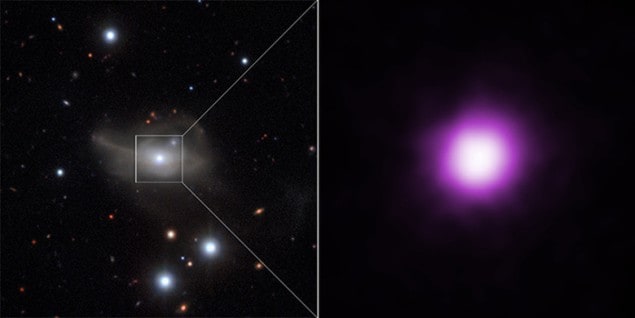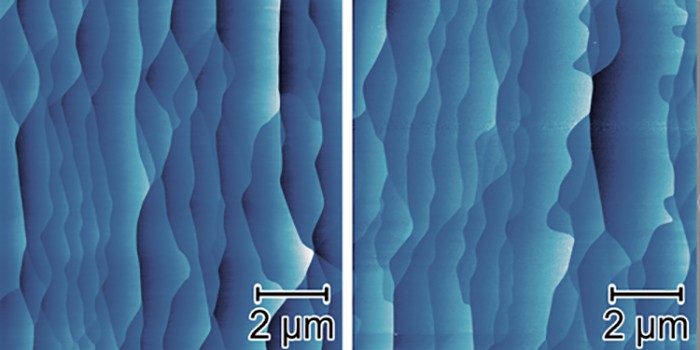Flash Physics is our daily pick of the latest need-to-know developments from the global physics community selected by Physics World‘s team of editors and reporters

Active galactic nuclei dims due to starving black hole
Over the past 30 years, astronomers have been studying a distant “active galaxy” that sporadically brightens and dims. Dubbed Markarian 1018, the galaxy has perplexed researchers as it shifts between bright and dim phases, which has rarely been seen before. By observing this galaxy in detail using a variety of telescopes including NASA’s Chandra X-ray Observatory, ESO’s Very Large Telescope (VLT), and others, astronomers have now concluded that the dimming occurs when the supermassive black hole at the heart of the galaxy is deprived of fuel (in the form of infalling matter) to illuminate its surroundings. “Active galactic nuclei” or AGN are some of the brightest objects in the universe and are classified into two types, depending on the light they emit – one type of AGN tends to be brighter than the other. Some AGN have been observed to change once between these two types over the course of only 10 years. But Markarian 1018 has changed type twice – from a faint to a bright AGN in the 1980s and then back to a faint AGN within the last five years. Indeed, during the second change the AGN became eight times fainter in X-rays between 2010 and 2016. The researchers were finally able to show that the active galaxy had faded because the black hole was being starved of infalling material – this also explains the fading of the AGN in X-rays. The lack of fuel could have been caused via interactions with a second supermassive black hole in the system. The research is described in two papers, published in the journal Astronomy and Astrophysics.
Australian and Chinese particle-physics institutes come together
The Australian ARC Centre for Particle Physics at the Terascale (CoEPP) and the Chinese Institute of High Energy Physics (IHEP) have signed a memorandum of understanding to establish scientific exchange, collaboration and co-operation between the two organizations, at a ceremony held in Beijing yesterday. “Today we established the formal collaboration. It will benefit to the development of high energy physics in both countries, especially to the future large science facilities,” says IHEP director Yifang Wang. The agreement hopes to encourage scientists from both institutions to share their expertise and collaborate on a number of initiatives, with a special focus on the planned Circular Electron Positron Collider (CEPC). “This formalization of a partnership with IHEP is a great step for Australia. We share a great many research interests and I look forward to many years of successful collaboration with our colleagues at IHEP,” adds CoEPP director Geoffrey Taylor.
Freestanding graphene made by rapid cooling

A new technique for making freestanding graphene has been developed by Wataru Norimatsu and colleagues at Nagoya University in Japan. Graphene is a sheet of carbon one atom thick that has a range of properties that are technologically significant. It can be created by heating a piece of silicon carbide so that silicon atoms are removed from the surface, leaving behind carbon atoms that form graphene. An important shortcoming of this method is that bonds between carbon atoms in the graphene and silicon atoms in the substrate have a detrimental effect on the desired electronic properties of the graphene. Now, Norimatsu and colleagues have come up with a way of breaking the bonds to create freestanding graphene. Silicon carbide is first heated to over 1000 K to create graphene and then the sample is plunged into liquid nitrogen to cool it rapidly to 77 K. Graphene expands when cooled, whereas silicon carbide contracts. This breaks the bonds between the graphene and the substrate, leaving high-quality graphene, as described in Physical Review Letters.
- You can find all our daily Flash Physics posts in the website’s news section, as well as on Twitter and Facebook using #FlashPhysics. Tune in to physicsworld.com to read today’s extensive news story on the reaction of physicists to the Trump presidency.



